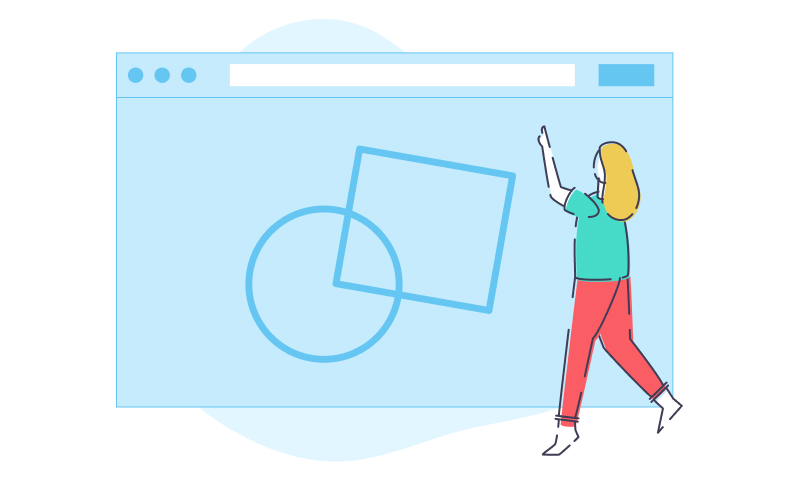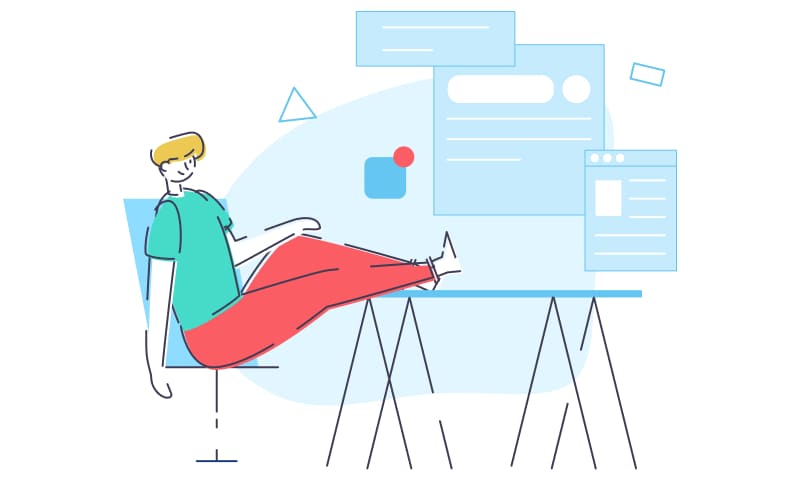What You Need to Know about Product Life Cycle Stages

IT copywriter
Reading time:
The development of a successful product is a complex, multistep process. In movies, we see images of budding businessmen coming up with a ground-breaking idea while sipping coffee from Starbucks. They playfully find investments and release an app that takes the world by storm. In real life, the development process looks a lot different.
The creation of any product consists of a number of mandatory stages that are completed sequentially or in parallel. For example, most apps you love to take over a year to get their current look, feel, and features. And, as soon as apps go live, developers still have to maintain and improve them. This is how apps are kept alive in the long run.
Thus, the software development life cycle is an ongoing process that ends when a project is closed. If you’ve come up with a product idea and reached out to the development team – brace yourself! There is a lot of work ahead. We’ll dream about Silicon Valley later.
As developers, we often face a misunderstanding of the product life cycle stages.
We have to refute the idea that development is completed after the release of the project. In our experience, you may need to finish or rebuild the functionality and fix some bugs in the first months of a product’s life. To convey our vision of the development lifecycle, we asked the senior developers of Azoft about their ideas.
Without further ado – let’s find out what the software development life cycle includes.
Software Development Life Cycle (SDLC) is a framework that development teams use to produce high-quality software in a systematic and cost-effective way.
The structure of the development cycle includes all stages of the life of the custom software, from its birth as an idea to its conditional “death”.
The sequence of phases that make up the life cycle
Immersing the team in the business context is an important phase of the software development cycle. That’s when the actual workflow begins. Investing time and money in this stage pays off well. It is crucial for the project team to learn about the details of the client’s business and get a better understanding of the product market. To develop a useful product, developers need to know its purpose This is true for every kind of business.
Collecting and analyzing requirements is no less important. It is performed by the senior members of the team with inputs from the customer, the sales department, market surveys and domain experts in the industry. It is important to define the requirements accurately and unambiguously for the project team and the business. Analysts help define the ultimate goals and objectives of the project.
Design. We proceed to this stage when we understand the goals of the project clearly and have developed sufficient requirements. Based on the requirements, several approaches to architecture design are considered. The internal design of all modules of the architecture should be defined clearly and described in detail.

Development. This is the stage of direct system development, where we write code.
Testing. At this stage, we check the system’s performance and identify and fix bugs until the product meets the required quality standards. During this period, there are usually many inconsistencies and bugs in software; these need to be eliminated quickly.
Implementation. When a product is tested and ready to be deployed, it is released to the market. Sometimes, a product is deployed step-by-step according to the customer’s business strategy. The product may first be released in a limited segment and tested in a real business environment. Then, based on feedback, it may be released as is or with suggested improvements.
Support. At this stage of the life cycle, periodic technical support of the system is carried out. This allows you to make sure that the system is not outdated and meets modern standards and technologies. This includes ongoing performance assessments and component updates.
In addition to the main phases described above, we also highlight the phase of marketing promotion. Marketing activities are end-to-end and are carried out throughout the product’s life cycle. It is important for the client to create awareness of the product among his target audience to attract potential users. The client base must be developed gradually.
Development processes are typical, but approaches for working are different. The chosen approach affects how long the stages will be, whether they will be done sequentially or iteratively, and how they will be performed.
Why it is important to understand the product life cycle stages
Sometimes clients, primarily startups, come up with an idea to develop a product, but they don’t have a comprehensive plan. This leads to a situation where the entire budget is spent on development and no funds are left for PR or product improvement.
Fortunately, such situations arise less and less. Nowadays, clients tend to know that they should consider long-term plans for the project and discuss them with their business partners. They understand that the life of a product begins with its idea, and that operation is an essential part of the life cycle. A product’s life extends beyond its development.
Developers do not always have correct ideas about the software life cycle. Some of them think “Well, I wrote the code and gave it my best shot. The future of the product doesn’t concern me.” This should not be the case. Programmers should always be ready for constant interaction with clients – to support and maintain the solutions they created.
Azoft has a rich history of long-term partnerships with many large companies. For example, we have been successfully supporting a personal account for the “Spasibo from Sberbank” loyalty program.
We believe that strong partnerships are important during all phases of the project and not just at the start. That’s why we always recommend that clients carefully plan out who will support a future project.
Do you want to develop a quality product that matches your business goals?
Read useful articles about our development experience and contact info@azoft.com for a free consultation!





Comments